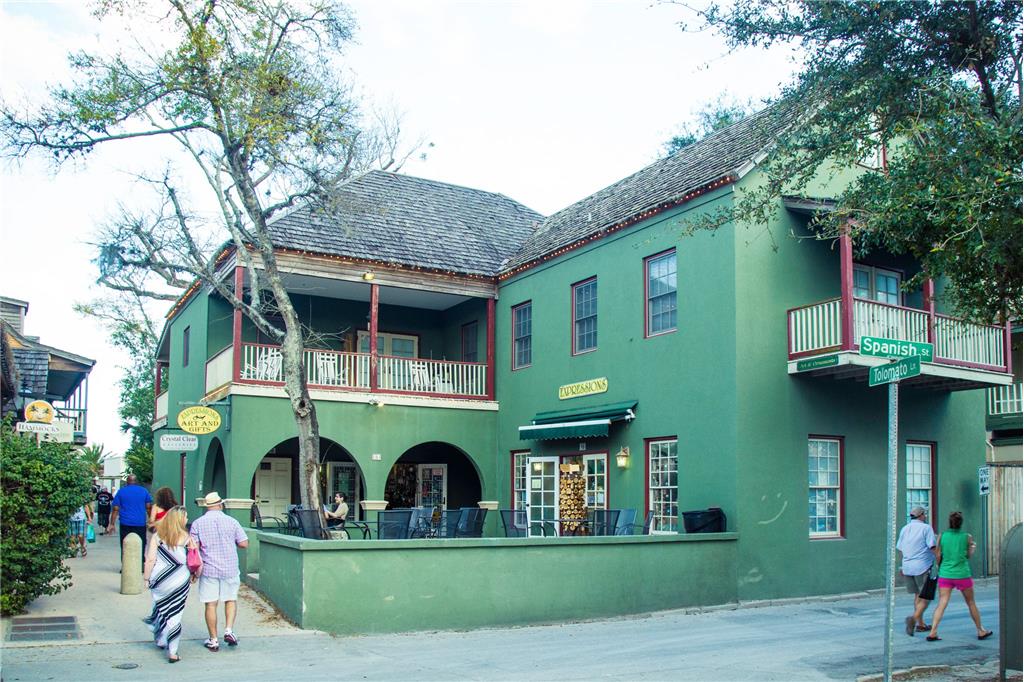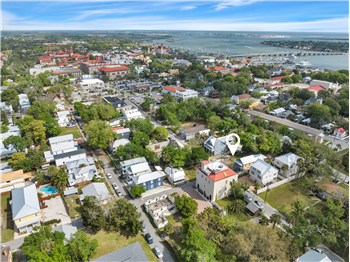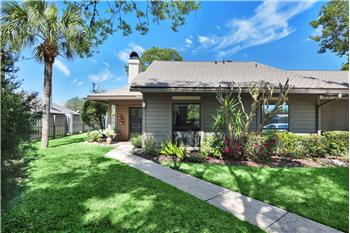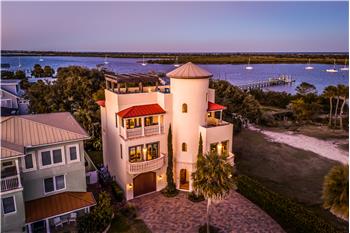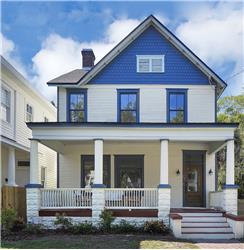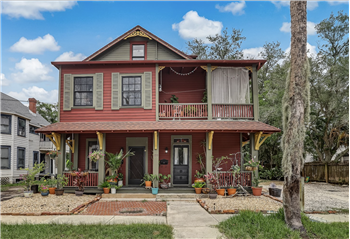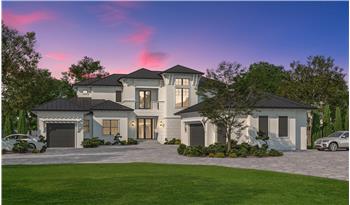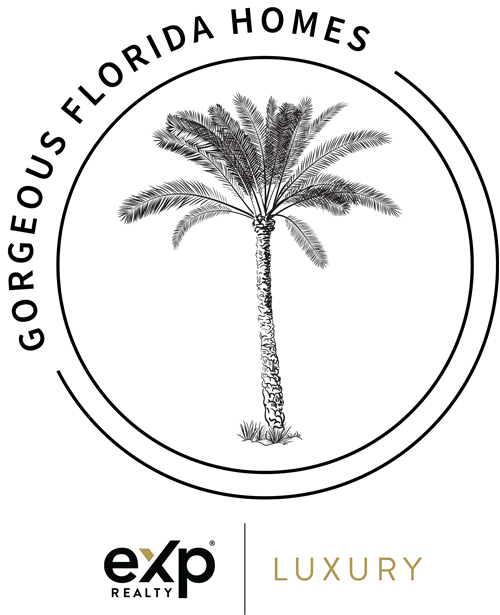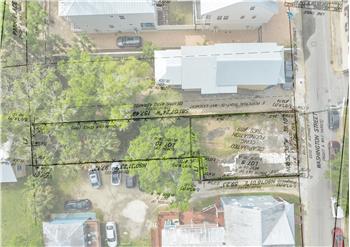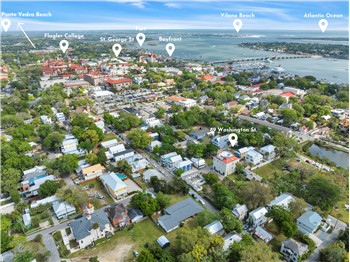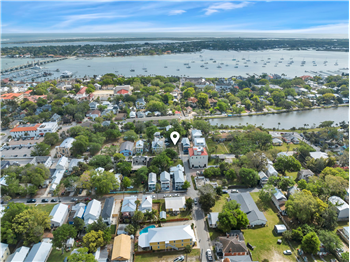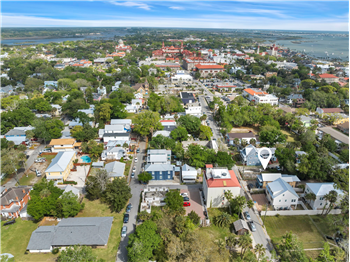|
|
$249,000
Lots and Land Lot: 4,792 sqft MLS #: 240302
|
89 Washington Street
|
Presented by Janie Marie Coffey |
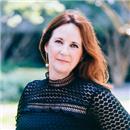
|
Neighborhood InfoLincolnville Historic District is a neighborhood in St. Augustine, Florida established by freedmen following the American Civil War and located on the southwest peninsula of the "nation's oldest city." The architecture is Victorian on the quaint tree lined streets doting on the fact it has the largest number of Victorian homes in St. Augustine. It was designated as an historic district in 1991 and listed on the National Register of Historic Places. Originally recorded with 548 contributing buildings, the district is bounded by Cedar, Riberia, Cerro and Washington streets and DeSoto Place. In the late 20th century, numerous African Americans moved from this district to newer housing in suburbs, following the postwar pattern of settlement. In the 1990s, the city of St. Augustine engaged in extensive demolitions in Lincolnville. The number of surviving historic buildings was markedly reduced. Since the turn of the 21st century, the city has sought more demolitions to enable redevelopment of the area. The community was established after the American Civil War in 1866. Freedmen (and women) Peter Sanks, Matilda Papy, Harriet Weedman, Miles Hancock, Israel McKenzie, Aaron DuPont and Tom Solana leased land for $1.00 a year on what was then the west bank of Maria Sanchez Creek, across from the developed part of St. Augustine. The rest of the peninsula was developed as two large orange grove plantations: the Dumas plantation "Yalaha" (Seminole word for orange) at the northern end and "Buena Esperanza" (Spanish for "Good Hope") at the south. The freedmen originally called their settlement Africa, or Little Africa. After streets were laid out in 1878, it came to be known as Lincolnville. In the 1860s the northwest corner of modern Lincolnville was an 5-acre (20,000 m2) orange grove owned by Abraham Lincoln's private secretary, John Hay. He later served as Secretary of State under Theodore Roosevelt). Over the decades the settlement was expanded from this northeast area, around present-day Washington, Oneida, Dumas, St. Francis, St. Benedict and DeHaven streets, and businessmen developed the entire peninsula. It was characterized by narrow streets, small lots, and houses built close to the street line, similar to the colonial St. Augustine style and land-use pattern. When Standard Oil magnate Henry Flagler came to St. Augustine in the 1880s, he redeveloped the city to serve as a "Winter Newport," a resort for the wealthy. His changes also affected Lincolnville. He filled in the northern reaches of Maria Sanchez Creek to create high ground for development (the landfill included dirt with archeological remains excavated from the site of Fort Mose). His Standard Oil partner William Warden dredged the southern part of the creek to create what is now Maria Sanchez Lake. This expanded the eastern boundary of Lincolnville to the Ponce de Leon Barracks at 172-180 Cordova Street. The Barracks is now considered one of the historic district's major buildings. During the late 19th and early 20th century, it housed African-American servants and others who worked at Flagler's hotels in the city. Some of the African-American waiters from the hotels formed the first professional black baseball team in the United States. When they played locally, they were known as the Ponce de Leon Giants; when they played in the North, they were known as the Cuban Giants. One member of the team, Frank Grant, was later elected to the Baseball Hall of Fame. Jacksonville native and nationally known writer James Weldon Johnson wrote about the baseball team in his 1933 autobiography Along This Way. The Lincolnville neighborhood currently spans 45 blocks on the southwest peninsula. Lincolnville is an eclectic neighborhood of homes, businesses, churches, parks, and museums. A number of festivals and events take place each year in Lincolnville, including the Blues Festival at the St. Benedict the Moor Catholic Church, and the Jazz Festival at the Lincolnville Museum and Cultural Center. The Lincolnville Porch Festival is a one-day event, held in September, during which intimate concerts take place simultaneously at different porches throughout the neighborhood.
________________ This painting from artist and teacher, Rosamond Parrish, book "Lincolnville, A Sketchbook Journal of St. Augustine's Historic Neighborhood. She compiled her paintings from years of wandering and sketching at the boatyards and the lovely Victorian homes of the fascinating Lincolnville neighborhood and put them into a book. |
